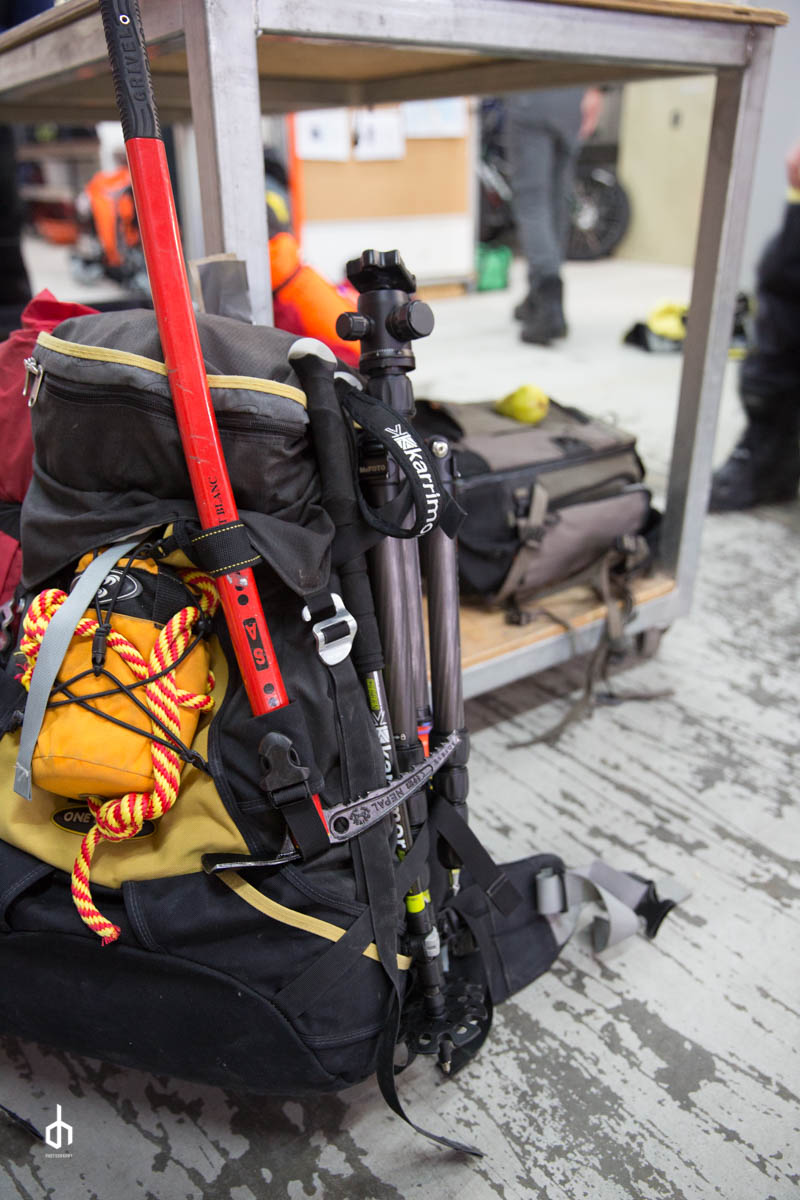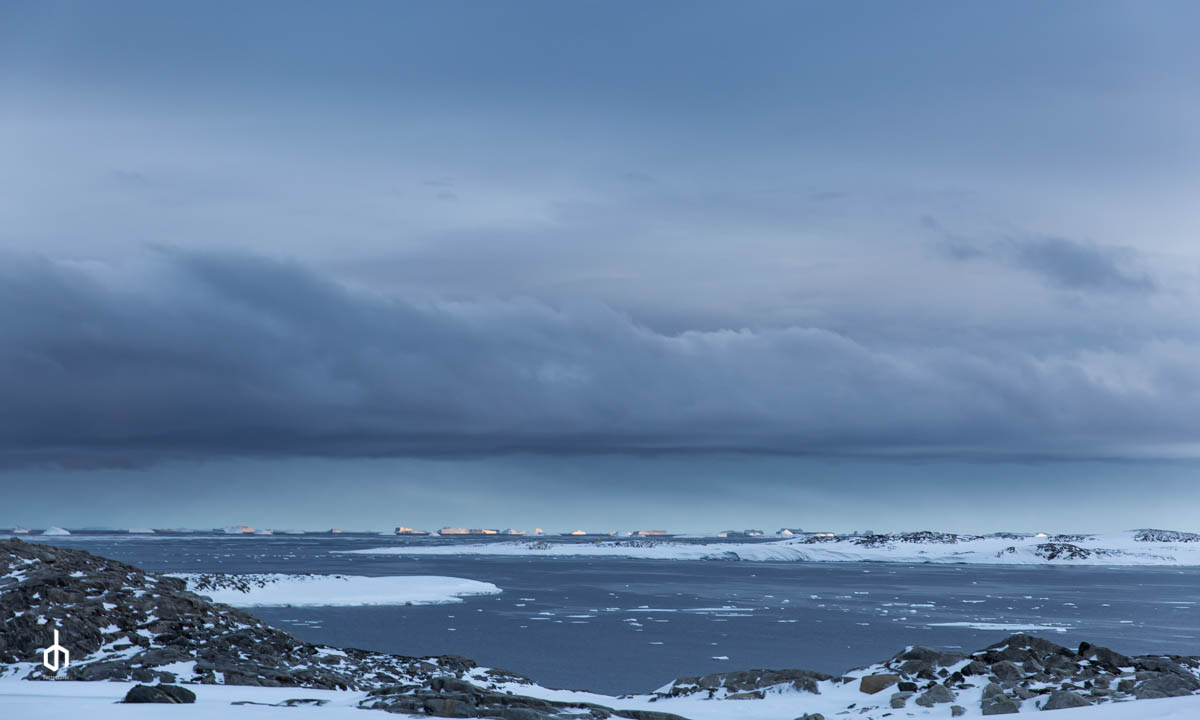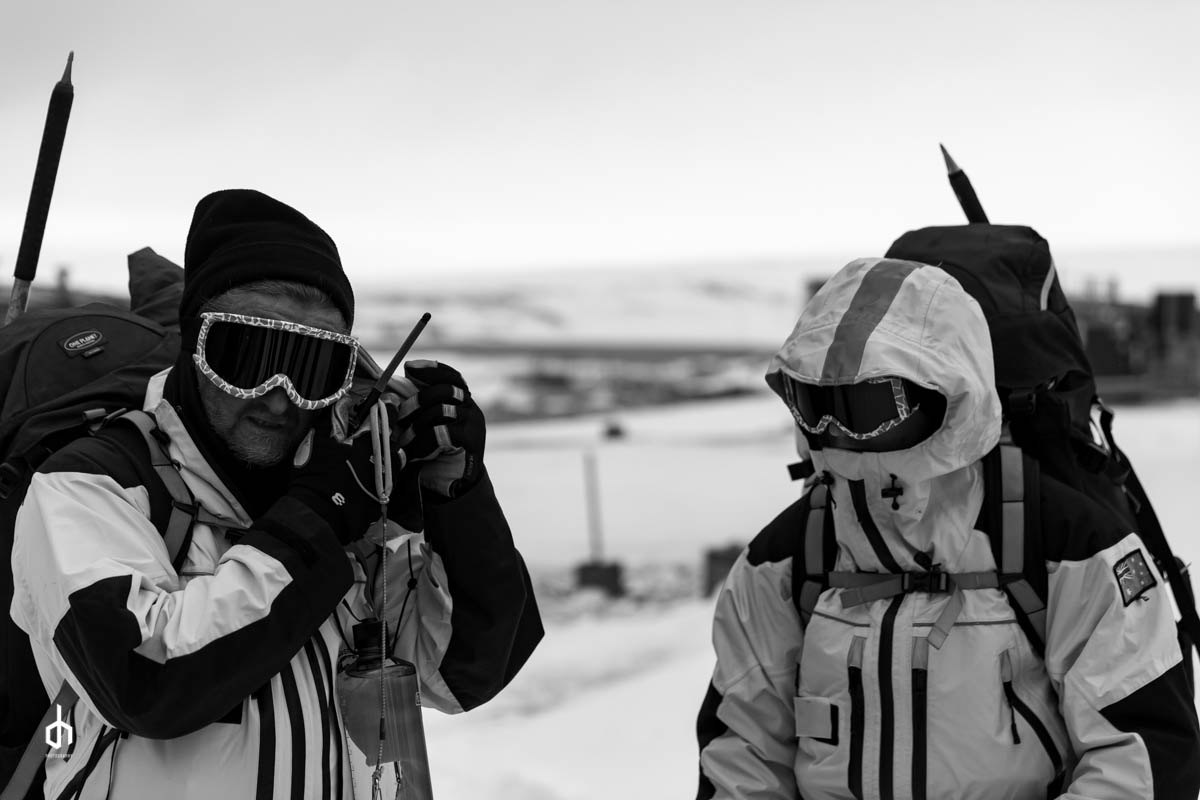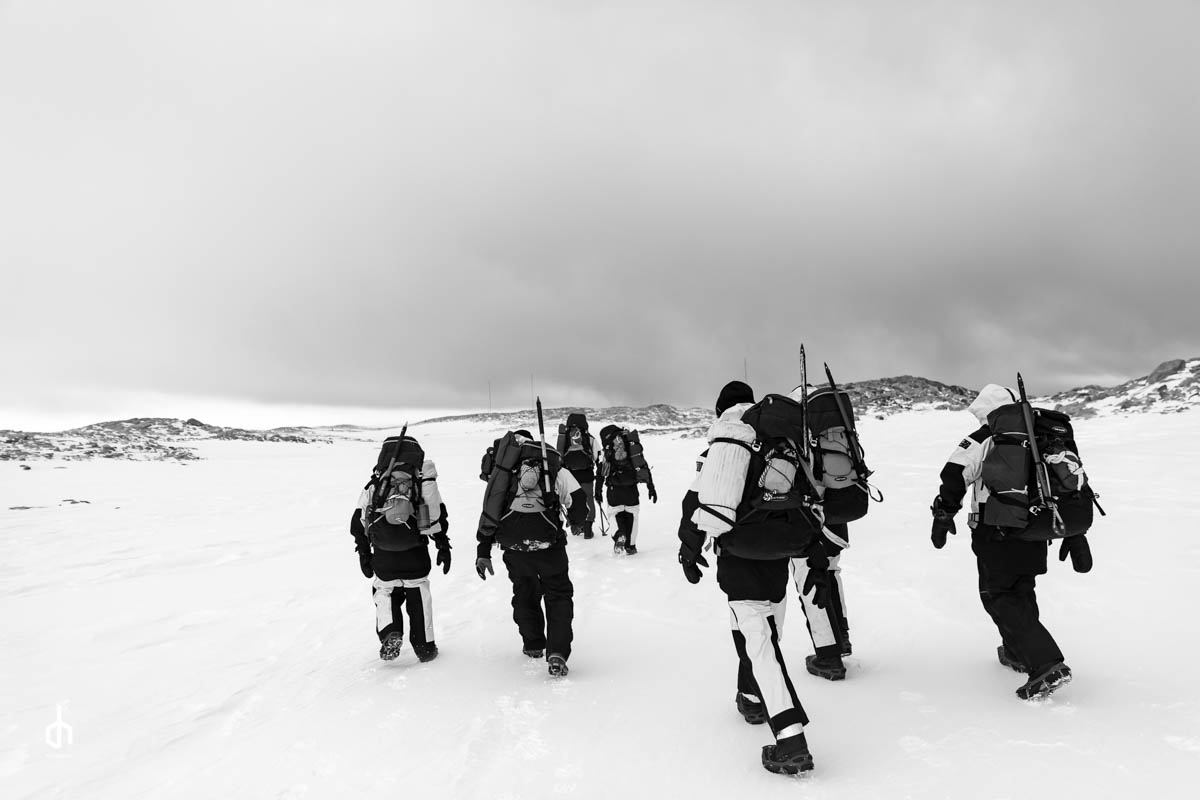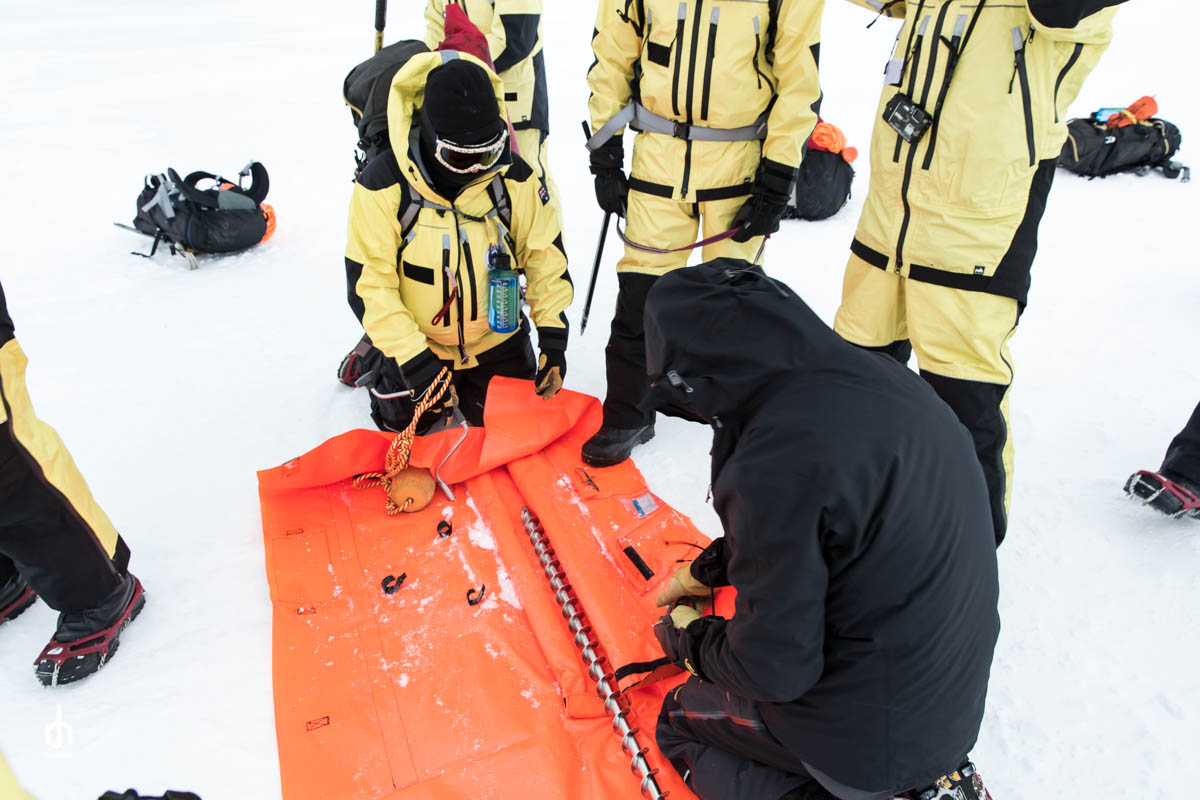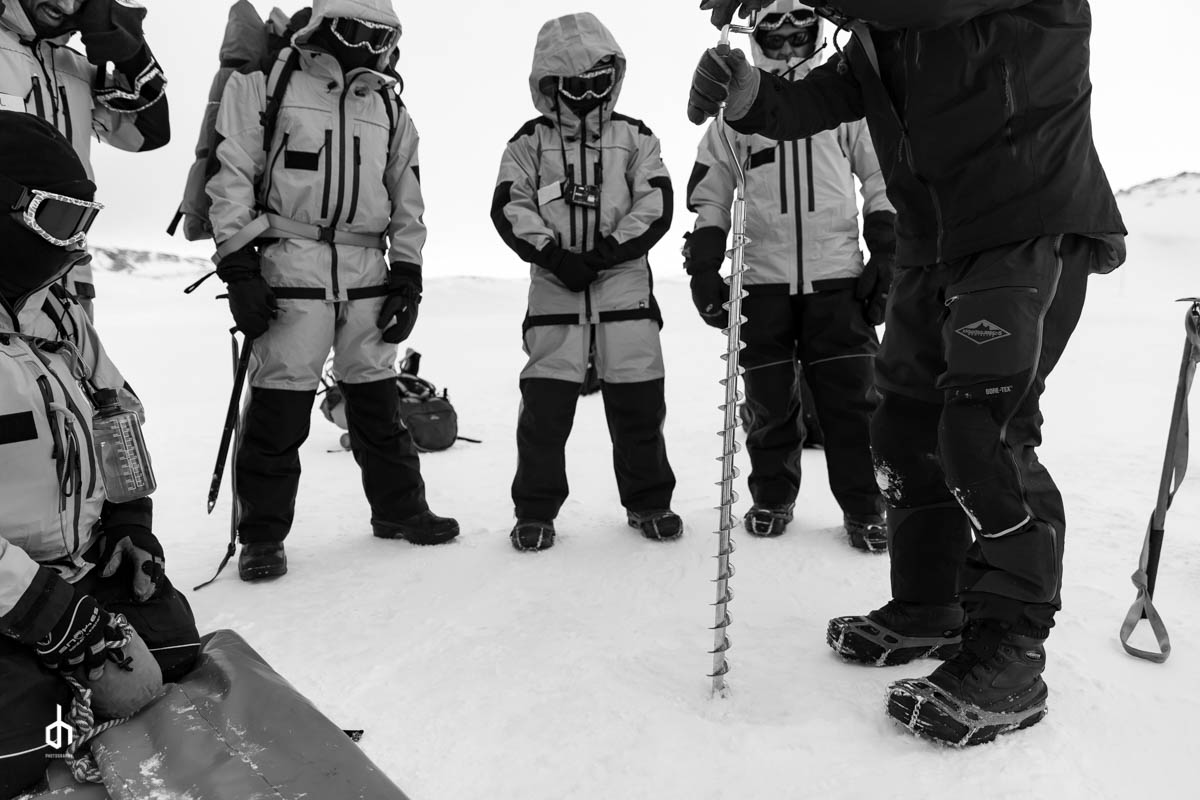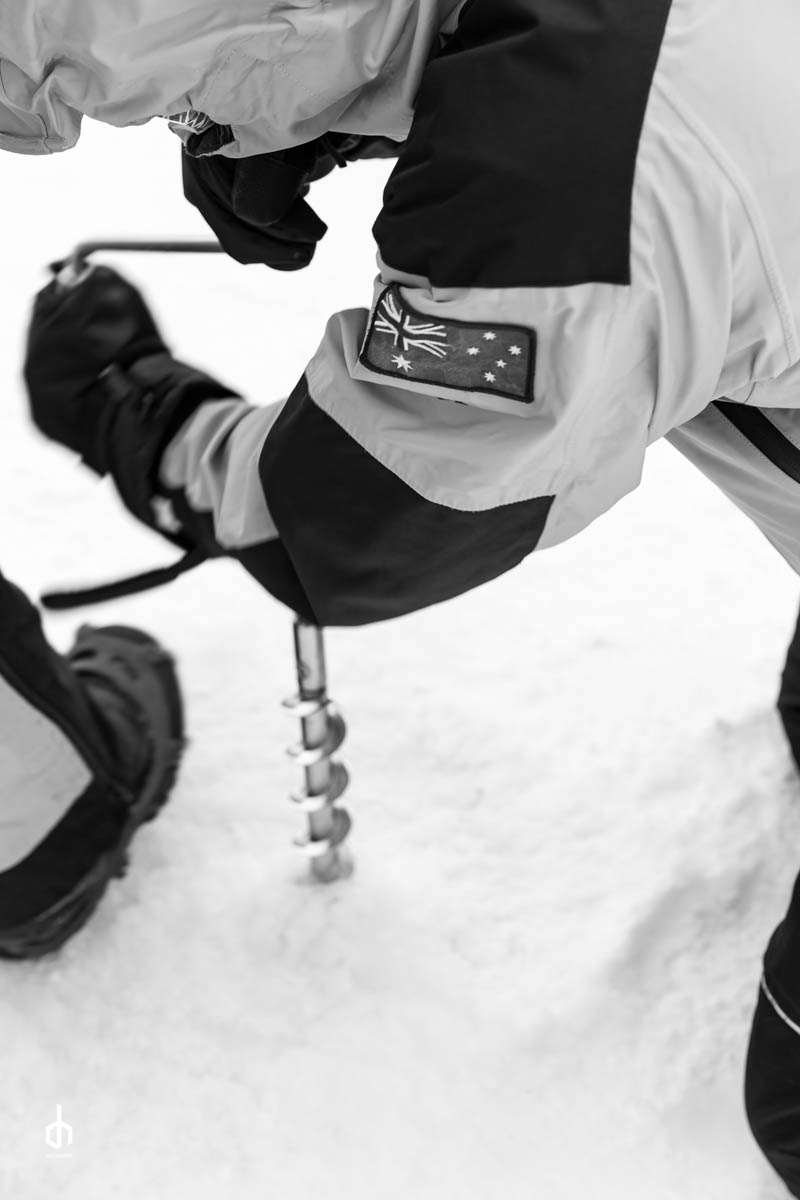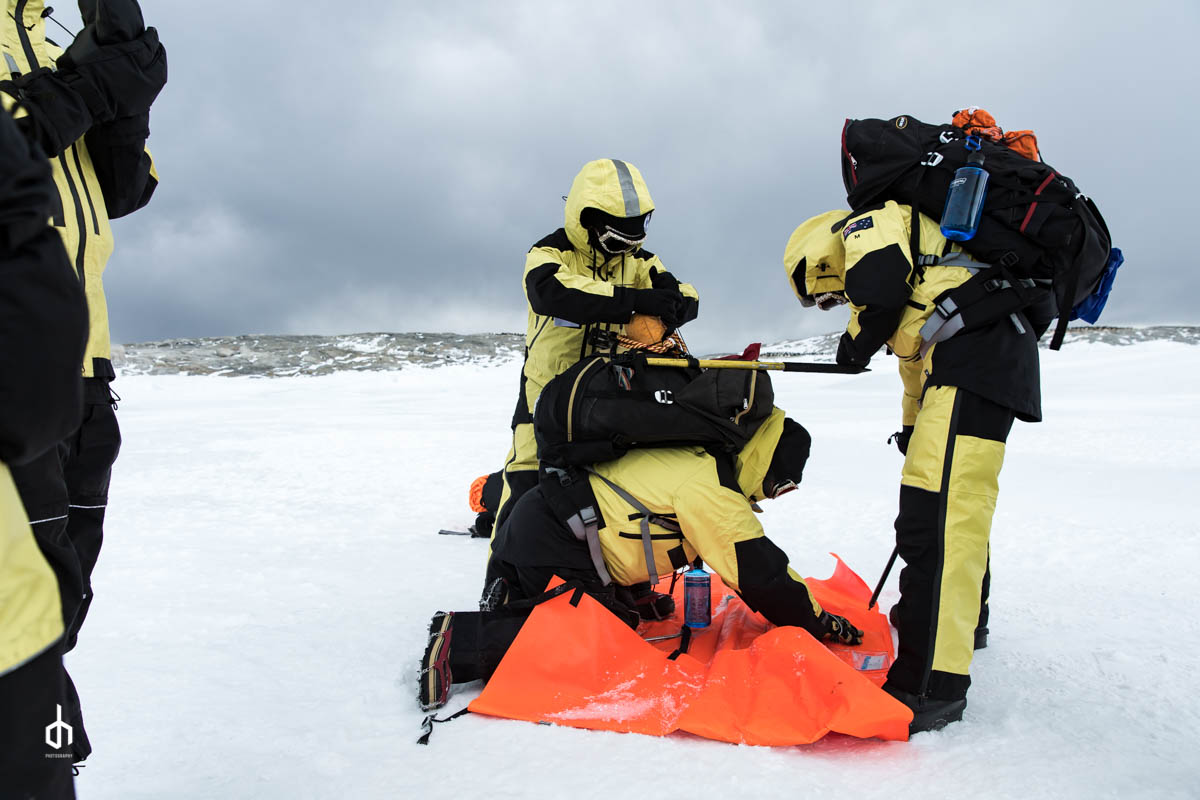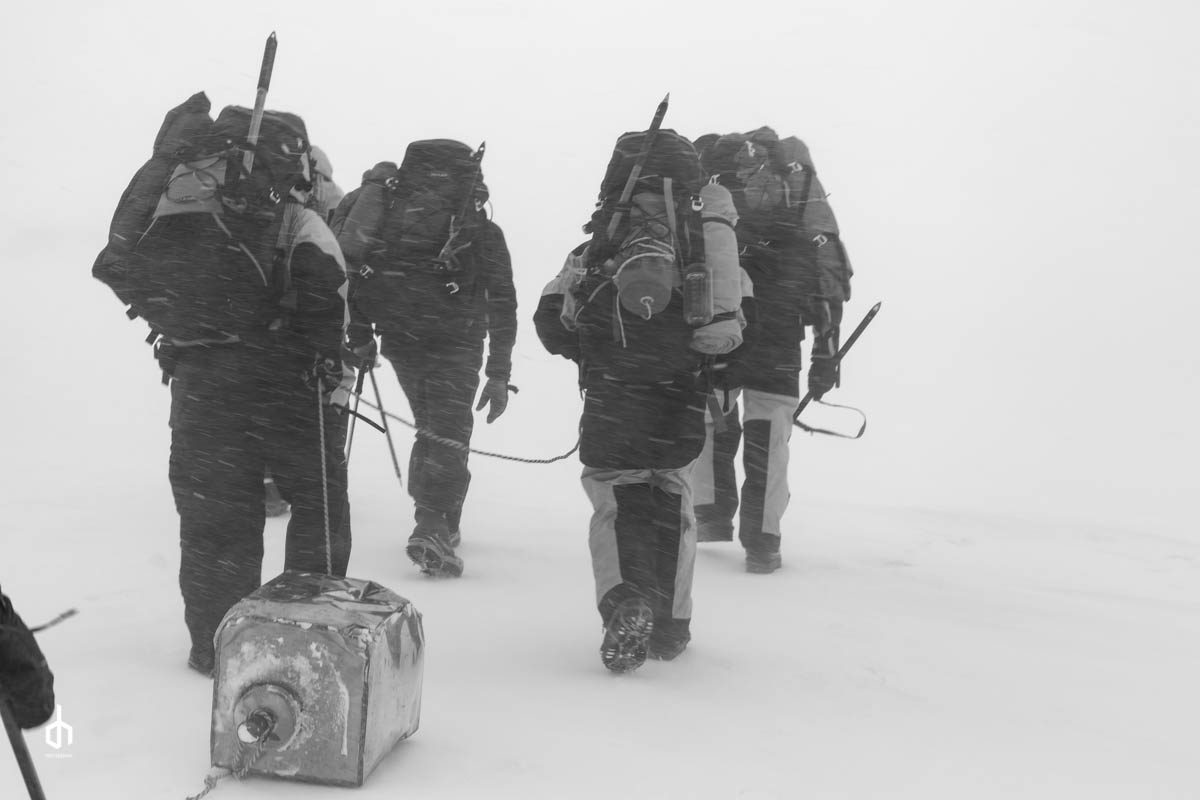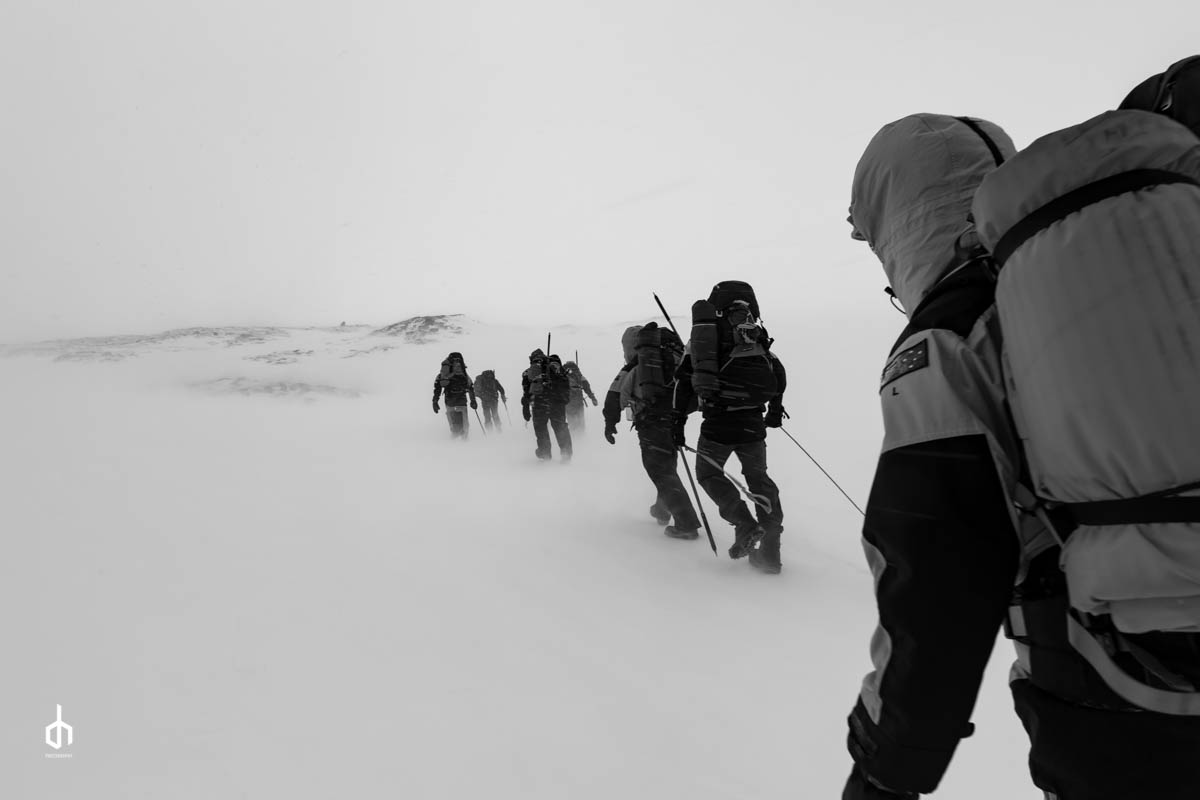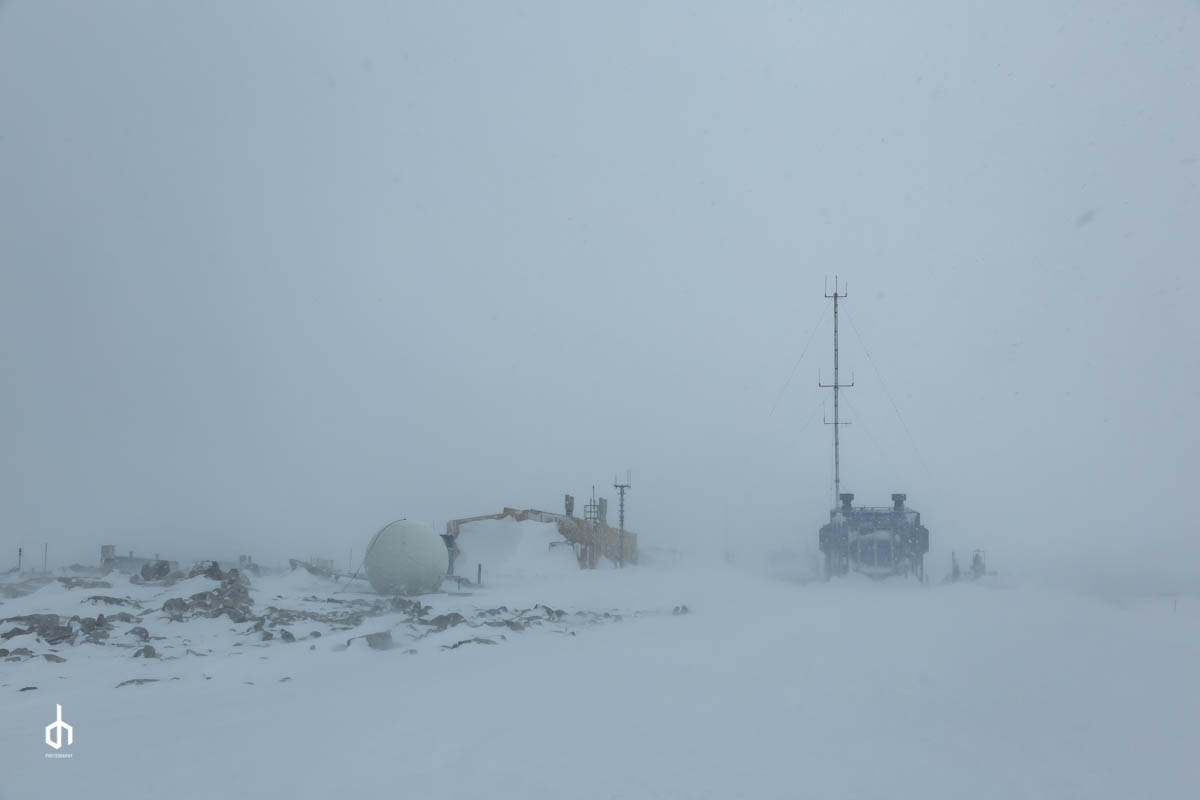Day 10. Survival Training
The Last few days have seen some heavy weather with a temperature of about -1 to -6 and wind chills to -13. The station went to condition red for awhile on Sunday when blizzard conditions came in and visibility dropped to below ten metres. Monday was scheduled for our survival training so those of us pencilled in were hoping the wind would ease and that we would be allowed to head out on the ice. Monday morning was still at condition Yellow but we started our theory practise anyway as the weather was supposed to lighten by the afternoon.
With an early start we had briefings until after lunch, beginning with pre-departure procedures in the red shed and covering everything from map and GPS reading to field safety, gear checks and communications. By mid afternoon the wind had dropped enough for our FTO (field training officer) to give the good news and as a group we loaded up and started our trek to Shirley Island.
Although the conditions had turned to green we were still battling high winds and biting cold temperatures and had to make sure not a single piece of skin was showing. You knew if it was as the cold would sting like a needle and you could easily get frost nip which could lead to frost bite. We left station limits with a quick radio check and about 20 minutes later descended to the sea ice. On our way down our FTO stopped us at a bright orange cache containing a drill kit which he explained we would need to measure the depth of the sea ice to monitor the thaw and make sure it was a safe thickness for us to cross. Once on the ice, a parcel of curious Adelie penguins came awkwardly waddling over to see what these giant yellow beasts were. They only stopped long enough to decide that we were in fact not penguins and therefore not worth any interest before shooting off to join their colony.
Half way across the sea ice we broke out the drill and took turns driving it down until we reached the depth where it broke through to the water below.. The final measurement was 160cm, enough to carry the stations heaviest field vehicles and of no risk to us on foot. As we ventured across the ice to Shirley Island we would prod the ground with our ice axes and walking poles to ensure there we no major fractures for us to fall in to. Often there would be long cracks with a soft top layer that would crumble away when pressure was applied. Still no risk to us but a sure warning that the sea ice was not permanent and would disappear with the coming summer.
Soon we were over the ice and on Shirley island, home to several Adelie penguin colonies. The Penguins are currently in nesting mode getting ready to breed so the maximum distance we could approach was 15 metres unless they came to us. We spent a good while hanging around and taking photos of these curious birds, elated by simply being in their presence. Just watching them waddle about, wings flapping, hopping up rocks and sliding on their bellies, is enough to warm the soul. After a generous break our FTO called the group and we started back across the sea ice and up the hill towards Casey.
As we climbed the hill, a few Adelies from a different colony had seen us and came zipping over. They followed us for quite awhile up the hill but eventually, their curiosity satisfied, concluded that again we really weren’t that interesting. At the top of the hill, with the weather starting to turn, we went through an emergency scenario as to what we would do if one of the group had broken his leg. The winds were picking up and we needed to find the best shelter possible after which we talked about how best alert help, apply first aid and bunker down. The trip back to Casey station became more difficult as we walked in to the head wind which had picked up substantially and visibility had lowered to perhaps 20 metres. Keeping the group tight we pushed on until we came back to station limits, the coloured buildings slowly materialising through the blanket of white.
We made our way back to the field store where our FTO explained our next activity, building dug outs to “bivie" in the snow over night. Luckily for us the weather again turned and the wind dropped right off in time for dinner. We spent an hour building our dug outs and field kitchen before helping ourselves to dehydrated army field rations and turning in for the night. I say night but the sun doesn’t really set. It is light all night. Tucked down in our bivies and sleeping bags I used my neck warmer to cover my eyes and simulate darkness, sleeping surprisingly well and only waking when the condensation in my bag turned to ice. I’d pop my head out for a minute or two for fresh air to be touched by the falling snow before ducking back into my warm cocoon.
Having “survived” the night our group is ticked off on survival training and are allowed to leave station limits to make the most of the recreational areas close to station. The next element of our training will be the Field Travel training where we will learn to utilise the various vehicles at the AADs disposal, thus extending our opportunities to get further into the field. Having only been here for ten days and I can already say I am in love with this continent and can not wait for the adventures ahead.



